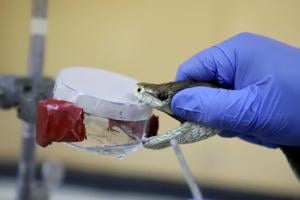MWINGI, Kenya (AP) — Esther Kangali felt a sharp pain while on her mother’s farm in eastern Kenya. She looked down and saw a large snake coiling around her left leg. She screamed, and her mother came running.
Kangali was rushed to a nearby health center, but it lacked antivenom to treat the snake’s bite. A referral hospital had none as well. Two days later, she reached a hospital in the capital, Nairobi, where her leg was amputated due to delayed treatment.

The 32-year-old mother of five knows it could have been avoided if clinics in areas where snakebites are common are stocked with antivenom. Kitui County, where the Kangalis have their farm, has Kenya’s second highest number of snakebite victims, according to the health ministry, which last year put annual cases at 20,000. Overall in Kenya, about 4,000 while 7,000 others experience paralysis or other health complications, according to the local .
Residents fear the problem is growing. As the and agricultural expansion, and as climate patterns become increasingly unpredictable, snakes are turning up around homes more frequently. “We are causing adverse effects on their habitats like forest destruction, and eventually we are having snakes come into our homes primarily to seek for water or food, and eventually we have the conflict between humans and the snakes,” said Geoffrey Maranga, a senior herpetologist at the Kenya Snakebite Research and Intervention Center.
also can drive snakes into homesteads, he said, as t.























